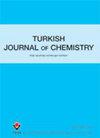改进用一氧化氮氧化测定光催化活性的实验方案的建议
IF 1.3
4区 化学
Q3 CHEMISTRY, MULTIDISCIPLINARY
引用次数: 0
摘要
根据ISO标准22197-1-2007所描述的定义明确的协议,光催化一氧化氮(NO)氧化反应被用作光催化活性的标准诊断工具。该方案确定了在从校准旁路到反应器的气体流动切换期间显示NOx浓度下降的负峰,因为NOx在表面上吸附。有证据表明,这第一次瞬变是由于反应器内气相的稀释效应造成的。在适当的停留时间分布分析模型下,这一瞬态现象揭示了系统内部的水动力特性,并可用于确定系统的内部体积。第二次瞬态发生在灯打开后。转换强烈地依赖于该瞬态的时间常数。光照强度影响的受控测量表明,在较高的光强度下,瞬态需要更长的时间才能达到稳定状态。较长的瞬态是由于过量载流子重组产生的热点达到热稳定状态所需的时间。当以催化剂用量为参数考察时,观察到饱和效应。这种饱和效应与氮氧化物和水分的气相浓度及其与有效比表面积的比值有关。因此,为了准确测量NO氧化的光催化活性,建议对光照强度和催化剂量进行额外的限制。本文章由计算机程序翻译,如有差异,请以英文原文为准。
Recommendations for improving the experimental protocol for the determination of photocatalytic activity by nitric oxide oxidation measurements
The photocatalytic nitric oxide (NO) oxidation reaction is used as a standard diagnostic tool for photocatalytic activity according to the well-defined protocol described by ISO Standard 22197-1-2007. This protocol identifies the negative peak showing a NOx concentration drop during a gas flow switch from the calibration bypass to the reactor as adsorption of NOx on the surface. Evidence is provided for this first transient to be due to a dilution effect in the gas phase within the reactor. With proper models of residence time distribution analysis, this transient revealed the internal hydrodynamics and it can be used to determine the internal volumes of the system. The second transient occurs immediately after the light is switched on. The conversions strongly depend on the time constant of this transient. Controlled measurements of the effect of illumination intensity revealed that at higher light intensities the transient takes longer to reach steady state. The longer transient was attributed to the time needed to reach a thermal steady state of the hot spots generated by the recombination of excess charge carriers. When the catalyst amount was investigated as a parameter, a saturation effect was observed. This saturation effect was correlated with the gas phase concentrations of NOx and moisture and their ratios to the available specific surface area. Hence, additional constraints with respect to the illumination intensity and catalyst amounts are recommended for accurate measurements of photocatalytic activity by NO oxidation.
求助全文
通过发布文献求助,成功后即可免费获取论文全文。
去求助
来源期刊

Turkish Journal of Chemistry
化学-工程:化工
CiteScore
2.40
自引率
7.10%
发文量
87
审稿时长
3 months
期刊介绍:
The Turkish Journal of Chemistry is a bimonthly multidisciplinary journal published by the Scientific and Technological Research Council of Turkey (TÜBİTAK).
The journal is dedicated to dissemination of knowledge in all disciplines of chemistry (organic, inorganic, physical, polymeric, technical, theoretical and analytical chemistry) as well as research at the interface with other sciences especially in chemical engineering where molecular aspects are key to the findings.
The journal accepts English-language original manuscripts and contribution is open to researchers of all nationalities.
The journal publishes refereed original papers, reviews, letters to editor and issues devoted to special fields.
All manuscripts are peer-reviewed and electronic processing ensures accurate reproduction of text and data, plus publication times as short as possible.
 求助内容:
求助内容: 应助结果提醒方式:
应助结果提醒方式:


